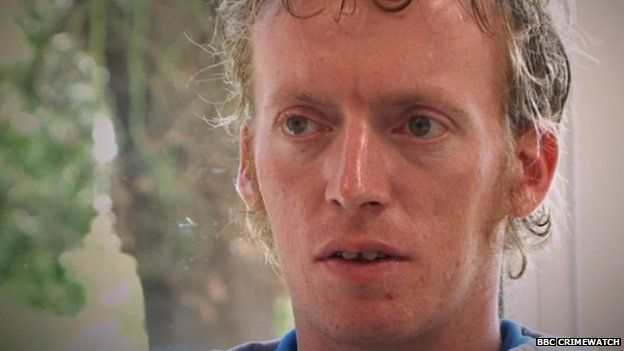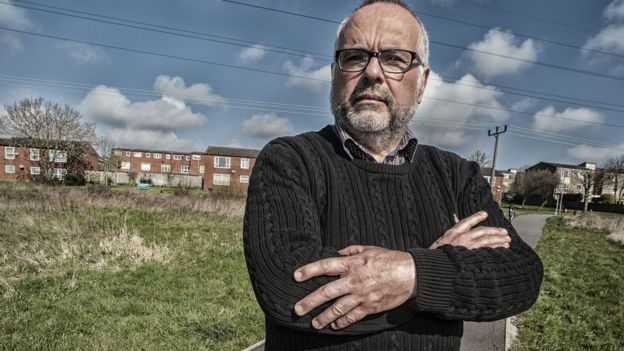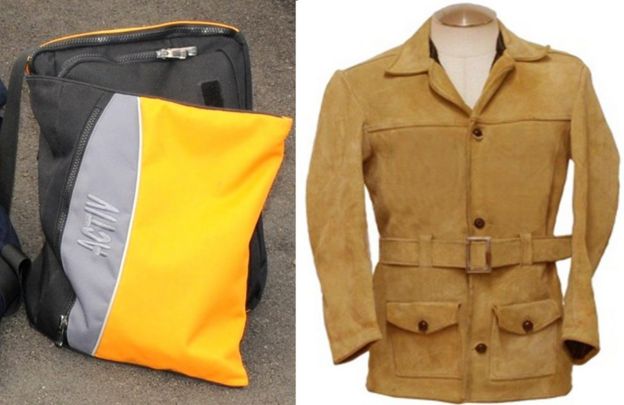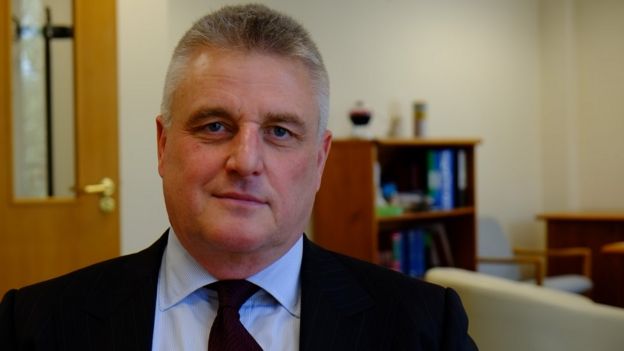First, a vulnerable man was found in a town centre park with more than 100 knife wounds. Second, a young Saudi woman was found stabbed 16 times on a busy path. Theories as to who was responsible abounded. None were as surprising as the truth.
Just thirteen days after the second murder, in which the Saudi student was found stabbed through the eyes beside a pathway, police found themselves speaking to a 15-year-old boy.
He was one of 70 people from across the north Essex area brought in for questioning about the killings of Nahid Almanea in June 2014 and James Attfield three months earlier.
The boy and the other 69 people had a history of knife offences.
James Fairweather, a pupil at Colchester Academy, was subject to a youth court supervision order for a knifepoint robbery in January 2014 in which he stole cigars from a shop.
Interviewed voluntarily with his mother at his side, he told police he had been at home at the time of the killing. He was not questioned further.
Unbeknown to police, they had just let a double killer walk free.

The murders

The ferocity of the attack on father-of-five James Attfield startled even experienced police officers.
He was stabbed and slashed more than 100 times in the town’s Castle Park in March 2014.
Mr Attfield was left covered in blood with injuries too gruesome to outline here. When he was found he was still alive.
He died lying on the ground in the park as paramedics tried to save his life.
Three months later, Nahid Almanea, a 31-year-old student at the University of Essex, was found stabbed to death in overgrown grass next to the Salary Brook Trail, a short distance from her home.
She had multiple injuries and had been stabbed in both eyes.

Two killers or one?

“We did not know what to think,” says Tim Young, a councillor who lives a short walk from where Ms Almanea was killed.
“I think that is why so many people were worried – and worried that it could it happen again.”
Mr Attfield and Ms Almanea were very different victims – one a white British male, the other a Saudi Muslim woman – and Mr Attfield was killed at night, Ms Almanea during the day.
For the town of Colchester, the killings posed a grim dilemma. Either there were two killers on the loose simultaneously or there was a single killer who seemed to have no obvious victim type.
As Colchester’s various parks and green spaces emptied of visitors, overgrown hedgerows were cut back to give the would-be attacker/s fewer spaces to hide.
“There were various theories out there – but I think there was a genuine feeling that whoever was responsible, it wasn’t somebody local,” says Mr Young.
“How could somebody local be capable of that?”

The investigation

Police appeal followed police appeal.
“There was very little forensic or physical evidence from the crime scenes or from the bodies that enabled police to follow lines of inquiry that would lead them to any individual,” said Paul Scothern, the Crown prosecutor who eventually decided to charge Fairweather.
Officers wanted to speak to “six mystery men” caught on CCTV, then a woman with an interest in pottery whom James Attfield had mentioned on social media, then a couple on a bench.
And with the murder of Ms Almanea came a new round of appeals, a number of arrests and then an appeal first for a tanned man in a distinctive Italian-style jacket, then a white man in a red, hooded top.
Social and mainstream media around the world were quick to link Ms Almanea’s religion with her murder. There were theories the killing was either racially or religiously motivated.
In fact, as the trial jury would hear, Ms Almanea was killed because she was in the wrong place at the wrong time.
“Target selection,” says Mr Scothern, “was purely random. The intention was to go out and kill somebody. There were no specifics in terms of who, or where, or when.”

The third victim

Then it all went quiet – until Michelle Sadler took her dog for a mid-morning walk on 27 May almost a year later.
She spotted somebody with thick dark-rimmed glasses standing alone on a footbridge close to where Ms Almanea had been stabbed to death.
He was, she thought, acting suspiciously and she felt “intimidated and anxious” by his presence.
Whereas many people may have simply shrugged off such a sighting, Ms Sadler decided to contact the police.
That boy was James Fairweather.
When PC Scott Lumis arrived 10 minutes later Fairweather told him he was out for a walk to clear his head. Fairweather said he “didn’t feel quite right”.

The officer asked him if he had something on him that he shouldn’t have. Yes, said Fairweather, who was wearing rubber-gripped gloves, he had a knife in his pocket.
The officer reached into his lower left pocket and pulled out a lock-knife.
Fairweather was arrested. It emerged during police interviews Fairweather had been hunting his third victim.
Why the 11-month gap? Fairweather said the first two murders had made the general public more nervous. This, he said, had made finding a fresh victim difficult.
So did police fail the public in not arresting him when they interviewed him shortly after Ms Almanea’s death? Paul Scothern thinks not.
“He was one of many who quite readily attended to be interviewed in relation to this matter, he gave an account and that account was to some extent verified,” said Mr Scothern.
“There was nothing beyond that to suggest he was linked or displayed any acts or demeanour that gave any more cause for concern. It was a very large scale inquiry.”

The Yorkshire Ripper and the DVD collection
Fairweather’s early school reports tell of a boy “sensitive to the feelings of others”.
When Dr Simon Hill assessed him last August, Fairweather was describing some of the “most anti-social and violent thoughts” the psychiatrist had come across in his professional practice.
Fairweather claimed to hear voices telling him to set fire to babies, expressed a hatred of prostitutes, saying voices told him to pull out their tongues.
He also described how, when his head teacher had made him angry, he could not contain his excitement at the idea of harming him and throwing acid in his face.
Some escalation in violence was evident in school. Fairweather, sometimes teased about his ears, was a “bit of a troublemaker” and a “wide-boy” whose attendance at school had become sporadic.
Teachers described incidents of kicking, head-butting and tossing school furniture around.
But there was little outwardly to suggest he would kill.
After he was arrested, police searched Fairweather’s bedroom and found a DVD about the Yorkshire Ripper, Peter Sutcliffe, and a book called The World’s Worst Crimes.
On his mobile telephone was found an article called “five horrific serial killers who are free right now“.
But while he clearly had an interest in serial killers, says Mr Scothern, “that in itself is not indicative of somebody who wants to be a serial killer or somebody who wants to copycat them.
“One only has to look in bookshops – it is a very healthily stocked section.”

‘I went into a rage’

Describing the killings to detectives, Fairweather said he sneaked out of the family home through the living room armed with a survival knife at about midnight and found Mr Attfield lying down drunk on grass.
He said voices told him Mr Attfield was “the one”.
Mr Attfield let out a loud scream, he said, “that goes right through you” and pleaded “stop, stop” as he firstly launched blows on his victim’s stomach and head.
He told detectives in the May 2015 interview: “I was using lots of force. I went into a rage. It was about two or three minutes.
“When you are in a rage and you hear voices laughing at you, you get really good strength.
“I stabbed him in the head. One shot missed on the side. I hit him in the eye, there was a big pool of blood. I thought he was dead.”
He also recalled sneaking up on Ms Almanea with a 10in (25cm) bayonet.
“She was walking away from me. She did not notice me. I pulled it (the bayonet) out.
“It went in to her kidneys, I reckon. She stumbled.
“It was a long knife and obviously went all the way through.
“I hit her in the eye and killed her instantly. It went through the brain.”
Why the eyes?
Fairweather said it was so she could not “see evil”.

‘He wanted to be a serial killer’

Fairweather’s plea that he was not guilty of murder on the grounds of diminished responsibility was based on claims he was compelled to kill by voices and visions of people.
Mr Scothern said some of Fairweather’s claims bore “striking similarity” to facts he knew “about previous serial killers and previous accounts they had given during their trials as to why they had committed those offences”.
But during the trial a number of psychiatrists said his claim to have heard voices was credible.
Not least because of a possible genetic predisposition to mental ill health.
Fairweather’s father had suffered mental health problems in adolescence, including hearing voices.
These were not impulse killings, says Mr Scothern. Fairweather, he says, went out intending to kill, he chose his victims and then consciously left barely any trace.
And he had no plans of stopping.
“He certainly expressed the intention that he wanted to continue those activities.”
And that he wore gloves when he was arrested, said Mr Scothern, suggests Fairweather wanted to evade detection “for as long as possible”.
“It is fair to say his intention was to become a serial killer.”

